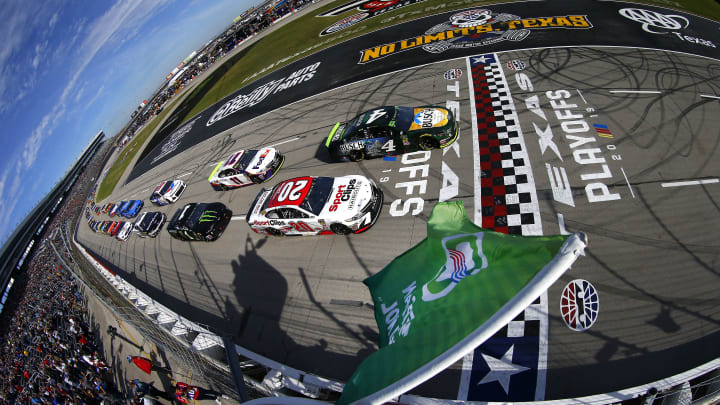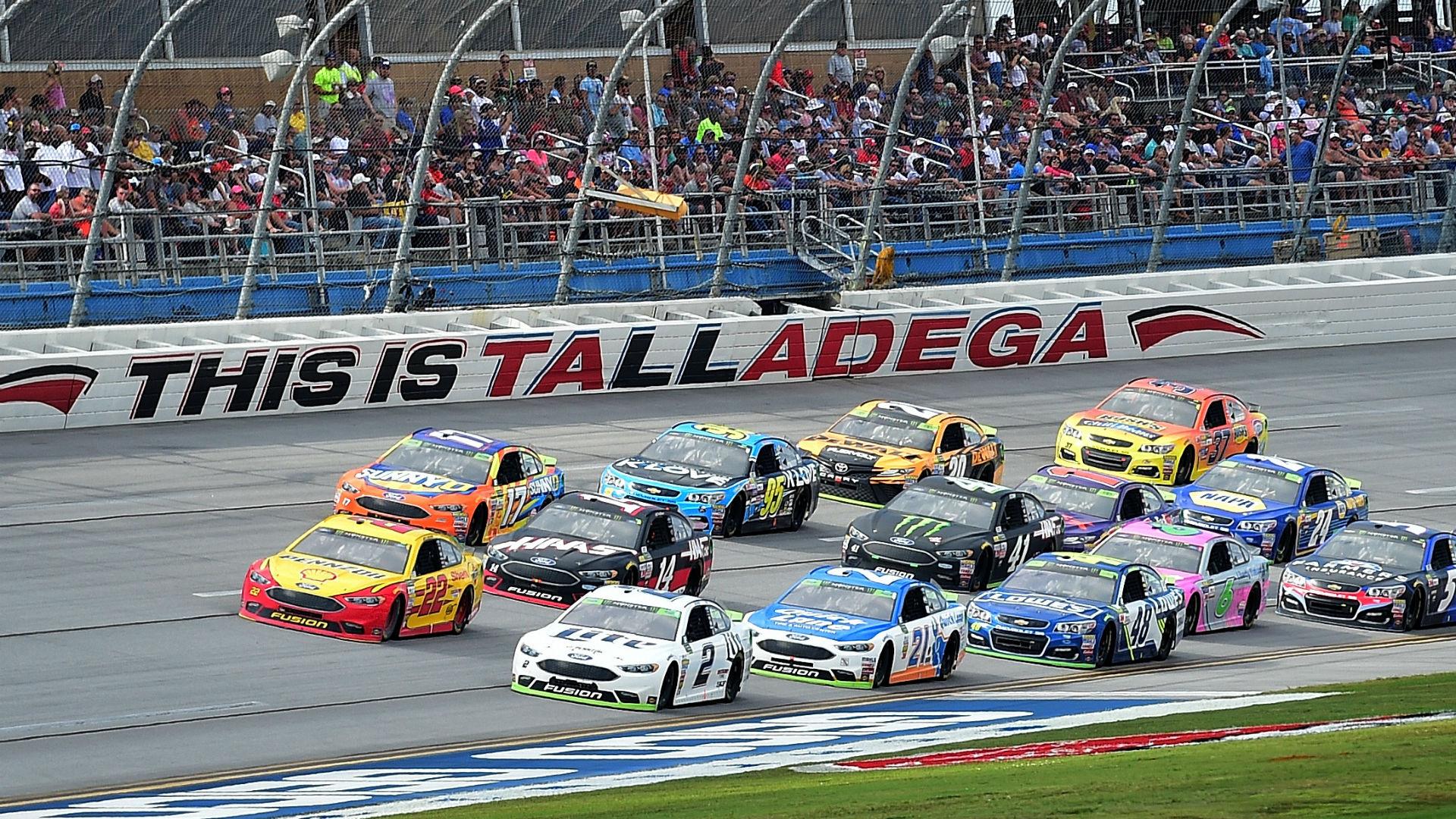
Fans are constantly asking themselves how long Atlanta Motor Speedway is. As it turns out, the track's backstretch is 1,800ft long compared with the two-mile tracks at Talladega (and Daytona). The track has also undergone a massive offseason repaving project, reducing its corners from 55 to 40 feet. But what makes Atlanta so special?
Atlanta's backstretch length measures 1,800 feet. This is compared to Daytona Superspeedway or Talladega Superspeedway at 1,050 feet.
The short track at Atlanta Motor Speedway will feature a SAFER barrier, which stands for Steel and Foam Energy Reduction. The barrier will protect a section of track's backstretch. Most of it will be installed between turns one and two. The track's exterior wall is also covered. Large portions of the interior walls are lined with SAFER barriers. Safety of drivers, fans, and staff remains the main concern.

Its corners have been reduced from 55 feet to forty feet
The new layout at Atlanta Motor Speedway is a big change from the existing 1.54-mile quadrioval. The asphalt was uneven and full of dips after it was last paved back in 1997. The banking has steepened and the asphalt has been reshaped to make tighter turns. Drivers will be required to drive more carefully when passing one other.
The track surface was modified in an off-season repaving project
The track surface will be altered at the 1.54-mile facility by the offseason repaving. The pitch of the turns during the project will be increased from twenty–five degrees to twenty–eight degrees. This makes it more steeper than other intermediate-sized tracks. The track's straightaways width will decrease from 55 feet down to forty feet. While the track's front straightaway is shorter than usual, it will still be twice as wide as the rest.
It hosted NASCAR Cup Series races
Atlanta Motor Speedway is a short track that hosts NASCAR Cup Series races. It's located in Georgia. This track hosted many famous races, including Jeff Gordon winning the Atlanta 500. Marvin Panch (Richard Petty) also won races there. The Atlanta track is different than most other Cup tracks, and the changes made to it have prompted some controversy. In the past, two Winston Cup Series races were held here and one Sprint Cup race.
It was home for Hurricane Frances' evacuees
Atlanta Motor Speedway has been providing shelter for evacuees since its inception. More than 100 people were evacuated by Hurricane Frances. The speedway was also open to evacuees during Hurricane Irma or Hurricane Michael. Atlanta Motor Speedway not only offers free campgrounds but also has restroom facilities and an RV washhouse.

It hosted 46 lead exchanges
The Atlanta Motor Speedway has set a new record for lead changes in a NASCAR Cup Series race with 46. In this race, 20 of the 37 starters held the lead at some point. With qualifying speeds of over 190 mph, the track is the fastest in Winston Cup Series. The track hosts many other events such as car shows, corporate events, concerts outdoors, and dog shows. Although it isn't as vast as other superspeedway tracks the banked nature of the track has allowed for pack racing to be an important factor.
FAQ
Why is it that race car drivers sport special clothing?
Many race car drivers wear special clothes.
These clothes keep them cool during races.
The fabric stops sweat dripping from their bodies.
It also protects them from the wind-blown damage to their skin.
What is the difference between a road car and a racing car?
Road cars can be driven on public roads. Racing cars are designed specifically for use in competitions such as car racing. They are equipped with aerodynamic features that enable them to accelerate fast and brake easily.
Is it hard to become a race car driver.
It takes hard work. You must practice every day. If you don’t put in the effort and time, you will never succeed.
You must be willing sacrifice everything to achieve this dream. It's not just a game where you win if you're fast enough.
Many people attempt to drive, but they don't succeed because they're not willing to put in the effort. They want a simpler lifestyle.
They want to go home every night, and they don't need to do any extra work. You have to be willing and able to give up all other things if you want success.
It takes a lot of effort to become a race car driver.
Who was the first to race a car?
Charles Brady King, who in 1896 built Long Island's first automobile racecourse. July 4th of that year saw the inaugural auto race.
What type of cars are used in racing cars and why?
The most important thing for any race car driver is speed. Speed is what makes them fast. They must be fast enough that they catch up to other drivers and strong enough to maintain the lead. This gives them an edge over other racers because they can easily overtake others at high speed and then pull away from them when they're not looking.
The lightest cars are typically the fastest. This allows them to accelerate quickly, and gain great speed. However, they also have less power. This limits their ability to travel far in a relatively short time. Therefore, they must use energy efficiently.
Engines power most modern-day racing cars. These are similar to those found in normal passenger vehicles. But instead of using petrol, these engines run on compressed air. This is because petrol can't provide enough power for a car to go fast.
Statistics
- In 2013 Ferrari had an estimated team budget of $470 million, while elite IndyCar teams have an estimated annual budget of $15 million, according to FormulaMoney. (businessinsider.com)
- In 2009, the slick tires returned as a part of revisions to the rules for the 2009 season; slicks have no grooves and give up to 18% more contact with the track. (en.wikipedia.org)
- According to FormulaMoney, the design, development, and construction of chassis and engines can cost teams as much as $255 million annually. (businessinsider.com)
- This change may give an improvement of up to 29% fuel efficiency. (en.wikipedia.org)
- Acceleration is a little gentler (relatively speaking) too, with 0-100km/h taking an estimated 3.1 seconds and 0-200km/h covered in 7.8 seconds. (autosport.com)
External Links
How To
5 of the Fastest Stock Cars For Street Racing In 2022
-
Ford Mustang GT350R for $50k+
The Ford Mustang GT350R street-legal Shelby GT350R supercar. It features a 6.2L V8 engine producing over 600 horsepower and 590 lb-ft of torque. The car comes standard with Brembo brakes, Michelin Pilot Sport Cup 2 tires, and 20-inch wheels wrapped in Pirelli Scorpion Z tires. The interior has leather seats, carbon fibre trim, and a 10.25 inch touchscreen display.
-
Chevrolet Corvette C8Z06 – $60k-$80k
The Chevrolet Corvette C8Z07 sports car is a mid-engine, built by General Motors. It was first shown at the 2017 Detroit Auto Show. It is powered by a naturally-aspirated 8.0L LT4 V8 motor that produces 650 hp, 700 lbft of torque and produces 650 hp. The engine is mated with a seven-speed manual transmission. It weighs in at 2,800 pounds.
-
Dodge Challenger SRT Hellcat Widebody $70k - $100k
The Dodge Challenger SRT Hellcat Widebody by Chrysler Group LLC is a muscle vehicle. It is based off the third-generation Charger platform, introduced in 2016. Since 2018, the wide-body variant has been in production. The supercharged 6.2L HPI V8 engine produces 707 horsepower, making the car the fastest vehicle to be produced in the world.
-
BMW M760Li xDrive – $140k - $180k
The BMW 760Li high-performance luxury sedan manufactured by German manufacturer BMW AG is a BMW 760Li. The second generation of the 760Li was introduced in 2012, the model year 2012. It is powered by a twin-turbocharged, 4.4L V8 petrol engine. This produces 750 horsepower and 800 Nm peak torque. The car has a speed range of 0-60 mph (0–100 km/h) in just 3.9 seconds. It can also reach top speeds of 196 km/h (315 km/h).
-
Porsche 911 Turbo S from $160k to $200k
The Porsche 911 Turbo S version is a high performance 911 roadster. The 3.8L turbodiesel flat-six turbodiesel motor produces 550 hp. It is paired with a PDK twin-clutch transmission. It can reach speeds of 197 mph (317 km/h) and accelerates from 0 to 62 mph (100 km/h).